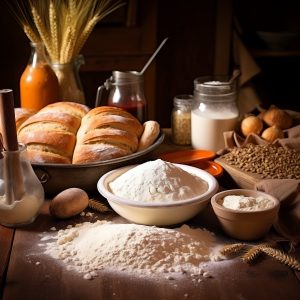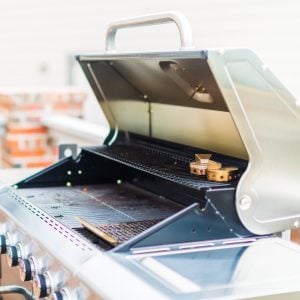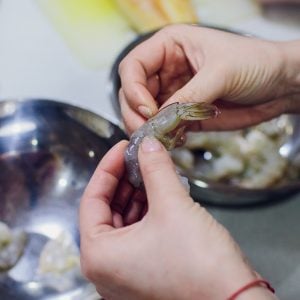London Broil Explained: Best Cuts, Marinades, and Cooking Tips
London broil sounds like a fancy cut of meat, right? But here’s the twist—it’s actually more of a cooking method than a specific cut. Over the years, butchers and grocery stores have blurred the lines.
Today, you’ll find packages labeled “London Broil” that refer to cuts like top round or flank steak. So, what gives?
The traditional London broil technique involves marinating a lean cut of beef, broiling it quickly over high heat, and then slicing it thinly across the grain. It’s all about turning a tougher, more affordable cut into something flavorful and tender. No need for a premium steak when you’ve got good technique and a solid marinade.
Still, if you’re shopping and see “London Broil” on the label, know it’s probably a top round or similar lean cut. The name stuck, even if it wasn’t meant to be a label in the first place. Whether you’re grilling, broiling, or pan-searing, the key is cooking it right and slicing it thin.
In this post, I’ll break down what London broil really means, how to cook it, and what cuts work best. Let’s clear up the confusion—and make something delicious while we’re at it.
London Broil Is A Cooking Technique
London Broil is a cooking technique, not originally a cut of meat.
Here’s what the traditional London Broil technique involves:
Marinate the beef – Start with a lean cut like top round or flank steak. Marinate it for several hours (or overnight) to tenderize and infuse flavor. Marinades typically include ingredients such as soy sauce, vinegar, garlic, oil, and herbs.
High-heat cooking – Traditionally, the meat is broiled in the oven, about 4–6 inches from the heating element. It’s cooked quickly at high heat to develop a crust while keeping the center medium-rare to medium.
Rest the meat – After cooking, let it rest for 5–10 minutes to allow the juices to redistribute.
Slice thin against the grain – This step is crucial. Cutting against the grain shortens the muscle fibers, making each bite more tender.
Why it works:
This technique transforms tougher, more affordable cuts into flavorful, tender slices of beef. It’s all about proper prep, quick cooking, and slicing technique.
Grilling is now a common variation of the method, but the classic London Broil was always about marinating, broiling, and slicing the meat thinly.

Step-By-Step Instructions for Broiling
| Action | Details / Tips |
|---|---|
| Choose the Cut | Use top round, flank, or another lean cut about 1½ to 2 inches thick. |
| Make the Marinade | Combine oil, vinegar or lemon juice, soy sauce, garlic, herbs, salt, and pepper. Optional: mustard, Worcestershire, or red pepper flakes for extra flavor. |
| Marinate the Beef | Place meat in a resealable bag or shallow dish. Pour marinade over and refrigerate for at least 4 hours, preferably overnight. Flip halfway through. |
| Bring to Room Temp | Take the beef out of the fridge 30–45 minutes before cooking to ensure even broiling. Pat dry for better browning. |
| Preheat the Broiler | Position oven rack 4–6 inches from the heating element. Preheat broiler for 5–10 minutes. |
| Broil the Beef | Place meat on a broiler pan or wire rack over a baking sheet. Broil 4–6 minutes per side for medium-rare (internal temp ~130–135°F). Adjust for doneness. |
| Rest the Meat | Remove from oven and let rest for 5–10 minutes loosely covered with foil. This helps juices redistribute. |
| Slice and Serve | Slice thinly against the grain at a slight angle. Serve hot, with juices spooned over if desired. |

Step-by-Step Instructions for Grilling
| Action | Details / Tips |
|---|---|
| Choose the Cut | Use top round, flank steak, or sirloin tip—about 1½ to 2 inches thick. |
| Prepare the Marinade | Mix oil, acid (vinegar or citrus), soy sauce or Worcestershire, garlic, herbs, salt, and pepper. Optional: honey or Dijon for balance. |
| Marinate the Meat | Place beef in a zip-top bag or glass dish. Pour in marinade. Refrigerate 4 to 24 hours, flipping once or twice. |
| Preheat the Grill | Heat your grill to high (around 450–500°F). Clean and oil the grates for best sear. |
| Bring to Room Temp | Take the steak out of the fridge 30–45 minutes before grilling. Pat dry for a better crust. |
| Grill the Beef | Grill over direct high heat, about 4–6 minutes per side for medium-rare (130–135°F). Don’t move it too much—let it sear. |
| Rest the Meat | Remove from grill. Tent with foil and let it rest 5–10 minutes to retain juices. |
| Slice and Serve | Cut thinly against the grain on a slight bias. Serve with grilled veggies or a chimichurri sauce. |
London Broil History
Despite its name, this beef dish does not come from London, England. The meal isn’t even served there. The etymology of the name is unknown, but it’s a North American creation, believed to have originated in Philadelphia, Pennsylvania, in 1931.
The original method of preparing the London Broil involved using a flank steak that was pan-fried to medium-rare and then cut across the grain to serve. This basic method eventually evolved to include marinating the flank steak and broiling it—hence the name. Now, we tend to grill London Broil instead of pan-frying or broiling it.
Traditionally, the marinade for this dish included a wide variety of ingredients, as chefs in those days would use whatever they had on hand in the kitchen to season the dish, rather than adhering to a specific recipe.
Today, people commonly use a mixture of olive oil, honey, balsamic vinegar, and ginger to marinate the London Broil.
Beef Cuts For London Broil
| Beef Cut | Description | Why It Works for London Broil |
|---|---|---|
| Top Round | Lean, flavorful cut from the rear leg. Often labeled as “London Broil” in stores. | Affordable, takes well to marinades, best sliced thin against the grain. |
| Flank Steak | Long, flat cut from the abdominal muscles of the cow. | Bold beefy flavor, benefits from marinating and quick high-heat cooking. |
| Bottom Round | Slightly tougher cut from the back leg, less tender than top round. | Economical, works well with long marinades and careful slicing. |
| Sirloin Tip | Cut from the round near the sirloin. Lean with moderate flavor. | Tender enough for broiling when marinated; great for slicing thin. |
| Hanger Steak | Cut from the plate, between the rib and loin. Rich and flavorful. | More tender than other cuts listed, broils beautifully, great texture. |
| Skirt Steak | Thin, long cut from the diaphragm area. Very flavorful and fibrous. | Cooks quickly, soaks up marinades well, excellent when sliced across the grain. |
| Shoulder Steak | Cut from the chuck, leaner portions. | Less expensive, responds well to marinades and broiling or grilling. |













6 Responses
I’ve recently started to take a lot more interest in the technical aspects of cooking and I’m enjoying reading your blog.
I was curious what you think about this article about marinades:
http://www.washingtonpost.com/wp-dyn/content/article/2008/06/10/AR2008061000614.html?sid=ST2008061003017
Apologies for the ugly URL. They are basically saying that the two reasons people marinate meats for long periods of time (for flavour and to tenderise) are in fact not true.
A quote from the article: “With it, he says, you get just as much effect from marinating for four seconds as for 24 hours.”
Hi Andre, I read the article and completely agree with it. Marinading meat does not tenderize it, but it does add flavor. I see I have to change what I wrote because it is wrong. I just called my friend Jim Tarantino who wrote the definitive guide on marinades called Marinades, Rubs, Brines, Cures & Glazes. He agrees marinading does not tenderize but adds “surface flavor”. He didn’t agree that it doesn’t add flavor, it does and I think the article said the same thing. Jim quoted a study done by Livermor Institute that showed it is the oil in a marinade that holds the flavors of the other ingredients to the surface of what you are cooking. If you want to tenderize meat or chicken, you need to think about a brine.
Thank you so much for what you do here. I think we speak the same language! I always felt like I should be able to do better for myself and my family. Real cooking (not Mac & cheese, etc.) has always seemed daunting to me, to say nothing of the seemingly inscrutable terminology that frequently goes with it. In the last couple of weeks since locating your web site (via web search), I have learned so much basic, vital cooking knowledge. I’m so grateful for the way you have assembled and presented all of this information, without any built in assumptions to leave me cold. I knew NOTHING about cooking beyond how to boil pasta and then add cans and jars of stuff to it. THIS is my Home Page, now! I’m getting started, from the beginning, and I’m feeling pretty jazzed about it!
If you haven’t published yet, I would like very much to know when you do. I’m going to want several copies!
Thank you Michael for your comments. Makes this hobby worth it every time I get one like yours. I’m working on a book but can’t seem to finish it up. I’ll let you know. thanks.
There’s nothing bad in Adolf’s meat tenderizer. It’s just Salt, Sugar, Corn Starch (Prevents Caking) and Bromelain (Tenderizer), which is just papaya enzyme. It’s this enzyme that breaks down the meat fibers. And make what you want of salt and sugar, but it’s not like they are nasty chemicals.
Thanks for sharing. Simplified comment- I often find myself marinating meat in salad dressing mixed with fresh pressed garlic and voila. Pretty tasty, regardless of cut. Pretty fail-proof and simple way to marinade.